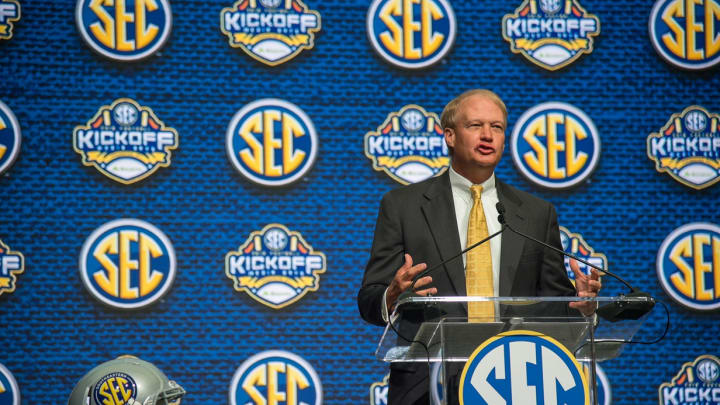Will New Rule Finally Deal With Fake Injuries in College Football? I'm Skeptical.

Last week the NCAA Football Rules Committee released a group of new rules for the 2022 football season. For the most part it was pretty basic stuff.
They changed the targeting rule so that if a player gets kicked out of the second half of a game, his conference can appeal the call to the National Coordinator of Officials, Steve Shaw. Shaw’s office will either uphold the call or reinstate the player for the first half of the next game.
Shaw, the former SEC supervisor of officials, said he expects players to be reinstated only “a handful of times.”
This won’t make the critics of the targeting rule happy, but at least there is another layer of accountability.
But here’s the change we need to discuss today.
Before now, the rule says if a team believes another team was faking injuries to slow down a game, it could file a report with Shaw’s office. A finding would be made and turned over to the athletics director of the (allegedly) offending school. That AD would decide if sanctions would be imposed against his own team.
I’m sure you’ll be shocked to know that nothing happened. Let's put it this way. If any sanctions were handed out anywhere for faking injuries it totally escaped me.
“We’ve got to find the sweet spot on this issue where we protect the player but also protect the integrity of the game,” said Shaw
“We’ve met with our coaches and they want something done about this,” said Todd Berry, the executive director of the American Football Coaches Association. “This (faking injuries) should not be a part of our game.”
Well, if the coaches don’t what this to be a part of the game then why do some of them keep doing it?
No need to answer that.
So here is the new rule for 2022: When a school files a report claiming that another team faked an injury, Shaw’s office will look at the report and send its finding to the commissioner of that team’s conference. The commissioner’s office will then determine if sanctions will be levied against the offending team.
Will it work? It could if enforced.
Because let’s be honest here. The commissioners could fix this with one move. If a team files a complaint of faking injuries and the National Coordinator of Officials agrees that it happened, a commissioner could bring the hammer down with a substantial fine against the school and a suspension of the head coach for at least one game.
Problem solved.
If this doesn’t work then we’re pretty much down to the last straw. And it is this. Warning: The up-tempo coaches aren’t going to like it.
Stanford Coach David Shaw, the chair of the rules committee, told Barrett Sallee of cbssports.com that there was a serious discussion about changing the substitution rules. For several years now the offense has dictated substitutions. If the offense didn’t substitute the defense could not substitute. If the offense did substitute the defense was given time to match personnel.
So fast-paced offenses would stay on the field hoping to wear out the big guys on the other side. That was when Alabama’s Nick Saban famously said “Is this what we want football to be?” He didn’t like it so he just changed his recruiting and got better at it than anybody else.
The change discussed would be to allow both offense and defense the opportunity to substitute after every first down.
“As soon as the first down is made the defense would get a chance to substitute even if the offense doesn’t,” said Steve Shaw when I asked about the rule. “They would have to substitute quickly while the chains are being moved.”
I can hear the up-tempo coaches howling right now but here’s the issue:
Those who run college football make a big deal out of rules changes to protect player safety. And they should. It IS a big deal. Thanks to rule changes over the past 10 years or so the game is much safer than it used to be.
And as much as people fuss and complain about the targeting rule, it has changed the way the game is played. The players have modified their behavior. And that’s a good thing.
Well, I can’t think of anything less safe than leaving a 300-pound defensive lineman on the field for an extended period of time and no way to get him off—other than fake an injury.
Why, you may ask, can’t you just penalize a player for faking an injury?
You can’t put this on the backs of the officials. The first time a flag is thrown for faking and the kid turns out to really be hurt, his parents will own that university.
Then why not make the player who is injured sit out the rest of the possession? You can’t put it on the players. If a player is hurt you want him to get off the field. Players would be tempted to play through the injury rather than ask for help.
Nope. The adults have to step up and fix this. As Todd Berry said, it has no place in our game.
We’ll see how this season goes and if anyone gets sanctions for faking an injury. And to the commissioners I would say this: The new rule only works if there is transparency.
If this season’s rule doesn’t work it is time to change the substitution rules. It is best for the game and it’s best for the players.
Some coaches really won’t like it. Some fans really won’t like it.
They’ll adjust.
